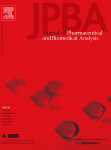
Ricerca & Innovazione > Contributi Scientifici
Calvi L., Pentimalli D., Panseri S., Giupponi L., Gelmini F., Beretta G., Vitali D., Bruno M., Zilio E., Pavlovic R., Giorgi A.
There are at least 554 identified compounds in C. sativa L., among them 113 phytocannabinoids and 120 terpenes. Phytocomplex composition differences between the pharmaceutical properties of different medical cannabis chemotype have been attributed to strict interactions, defined as ‘entourage effect’, between cannabinoids and terpenes as a result of synergic action. The chemical complexity of its bioactive constituents highlight the need for standardized and well-defined analytical approaches able to characterize the plant chemotype, the herbal drug quality as well as to monitor the quality of pharmaceutical cannabis extracts and preparations. Hence, in the first part of this study an analytical procedures involving the combination of headspace-solid-phase microextraction (HS-SPME) coupled to GC-MS and High Resolution Mass-Spectrometry LC-HRMS (Orbitrap®) were set up, validated and applied for the in-depth profiling and fingerprinting of cannabinoids and terpenes in two authorised medical grade varieties of Cannabis sativa L. inflorescences (Bedrocan® and Bediol®) and in obtained macerated oils. To better understand the trend of all volatile compounds and cannabinoids during oil storage a new procedure for cannabis macerated oil preparation without any thermal step was tested and compared with the existing conventional methods to assess the potentially detrimental effect of heating on overall product quality.
